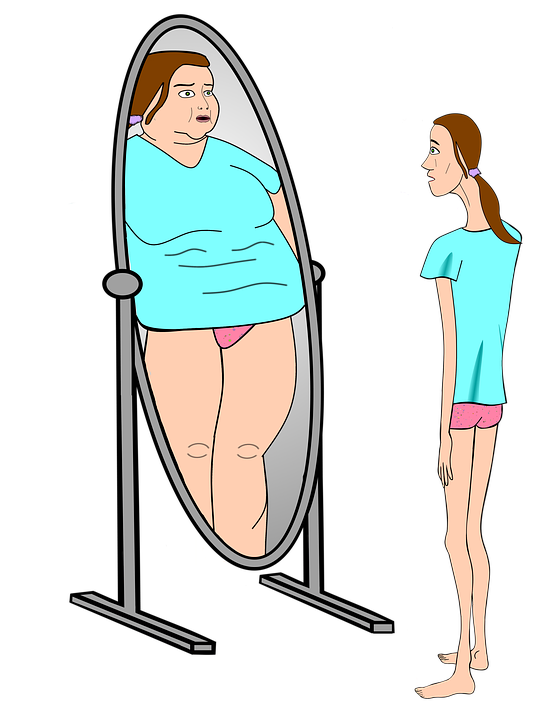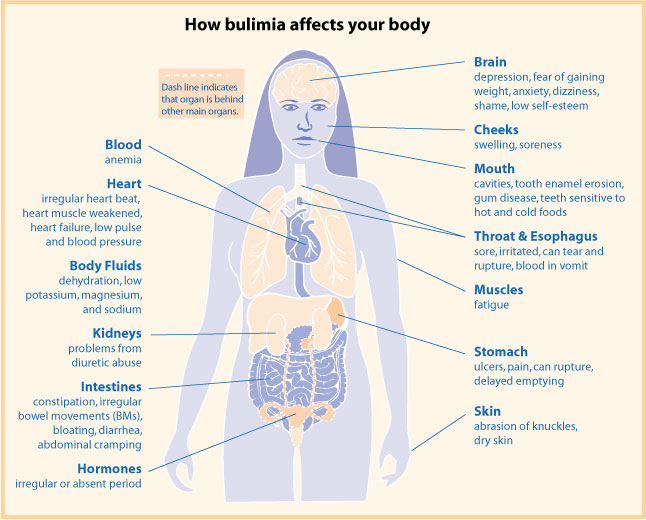
Source: Unplash
Eating disorders are becoming increasingly common in society today. This is a worrying trend, as eating disorders can have serious health implications. There are a number of reasons why eating disorders are becoming more prevalent. One reason is the increased pressure on people to be thin. In our society, there is a lot of emphases placed on appearance, and being thin is often seen as being more attractive. This pressure can lead people to develop eating disorders in an attempt to lose weight.
Another reason for the increase in eating disorders is the way that the media portrays thinness. In the media, we often see images of very thin celebrities and models. This can give people the impression that they need to be thin to be successful or happy. The increasing prevalence of eating disorders is a cause for concern. We need to educate people about the dangers of these disorders and provide support for those who are affected by them.
The reasons above are an explanation for one of the most common eating disorders out there - Anorexia nervosa. It is the most talked about eating disorder and many people out there think it is the only one. Actually, I used to think so myself until about five years ago in medical school.
There are several types of eating disorders, all with different symptoms and severity levels. Anorexia nervosa, bulimia nervosa, and binge-eating disorder are the most common.
Anorexia nervosa is characterized by extreme weight loss and a refusal to maintain healthy body weight. People with anorexia may have a distorted view of their body weight and shape, thinking they are overweight even when they are dangerously thin. They may limit the amount of food they eat or exercise excessively to prevent weight gain. Anorexia can be life-threatening if not treated.
Bulimia nervosa is similar to anorexia in that people with this disorder also have a distorted view of their body weight and shape. However, instead of restricting food intake, people with bulimia engage in binge eating followed by purging behaviours like self-induced vomiting or excessive exercise. These behaviours can be just as dangerous as anorexia and can lead to electrolyte imbalance, heart problems, and even death.
Binge-eating disorder is characterized by frequent episodes of overeating followed by feelings of guilt, shame, and embarrassment. People with binge-eating disorder often eat large amounts of food even when they’re not hungry and feel powerless to stop eating once they start. Binge-eating disorder is the most common eating disorder in the United States.

Source: Unplash
Bulimia Nervosa
Bulimia nervosa is an eating disorder characterized by binge eating followed by compensatory behaviours such as purging. Purging can be done by vomiting, using laxatives, or exercising excessively. Bulimia nervosa is a serious mental illness that can lead to physical complications such as dehydration, electrolyte imbalance, and heart problems.
People with bulimia nervosa often have a distorted body image and may see themselves as overweight even when they are not. The disorder typically starts during adolescence or young adulthood and can become a chronic condition. Bulimia nervosa is more common in women than men and usually occurs in people who have a family history of the disorder or other eating disorders. Treatment typically involves a combination of cognitive-behavioural therapy and medication. With treatment, most people with bulimia nervosa are able to recover and live healthy lives.
The symptoms of bulimia nervosa
Bulimia nervosa can lead to serious health complications, including electrolyte imbalances, dehydration, and heart problems.
The symptoms of bulimia nervosa include recurrent episodes of binge eating followed by purging. Purging may be done by self-induced vomiting or the use of laxatives, diuretics, or enemas. Binge eating episodes are characterized by eating an unusually large amount of food in a relatively short period of time and feeling out of control during the episode.
People with bulimia nervosa often feel disgusted and ashamed of their behaviour and try to keep it a secret. They may feel like they can't control their eating behaviours and that they are powerless to stop. As a result, people with bulimia nervosa often suffer from low self-esteem, depression, anxiety, and social isolation.

By Office of Women's Health. Public Domain, Link
The causes of bulimia nervosa
There are a variety of possible causes of bulimia nervosa, including both psychological and environmental factors.
Psychological factors that may contribute to bulimia nervosa include low self-esteem, perfectionism, and feelings of inadequacy or insecurity. Bulimia nervosa may also be triggered by stressful life events, such as divorce, job loss, or the death of a loved one.
Environmental factors that may contribute to bulimia nervosa include exposure to media images that promote unrealistic body ideals, pressure to be thin from friends or family members, or a history of dieting.
Treatment for bulimia nervosa
For someone with an eating disorder, mealtimes can be a battle. Willpower is pitted against hunger, cravings, and sometimes even panic. It's no wonder that people with eating disorders often feel isolated and alone. Fortunately, there are many different types of support available for those struggling with an eating disorder. The treatment for bulimia nervosa typically involves a combination of psychotherapy, medication, and nutritional counselling. Psychotherapy can help people with bulimia nervosa learn how to cope with their disorder (it includes cognitive behavioural therapy and family-based therapy) and medications, such as antidepressants, can also be used to treat bulimia nervosa.
Cognitive behavioural therapy (CBT): CBT is a type of psychotherapy that has been shown to be effective in treating bulimia nervosa. CBT can help individuals with bulimia nervosa to develop healthier coping mechanisms and thought patterns.
CBT helps people change their negative thinking patterns. This can be helpful for people with eating disorders who tend to have a lot of negative thoughts about themselves and their bodies.Family-based treatment (FBT): FBT is a type of therapy that involves the whole family. It can help families learn how to support their loved one with an eating disorder in a healthy way.
Nutritional counselling: Nutritional counselling can be helpful for people with all types of eating disorders including individuals with bulimia nervosa. A registered dietitian can help one develop a healthy relationship with food and one's body. A registered dietitian can work with one to develop a healthy eating plan that meets your individual needs. Nutritional counselling can help one to learn how to make healthy food choices and cope with difficult emotions in a healthy way.
Medications: Medication can also be used to treat bulimia nervosa. Selective serotonin reuptake inhibitors (SSRIs) are a type of antidepressant that is often prescribed for individuals with bulimia nervosa. SSRIs can help to reduce the frequency and severity of bingeing and purging episodes.
In severe cases of Bulimia, inpatient treatment might be required. Inpatient treatment is when someone stays in a hospital or other facility to receive care for their eating disorder. This type of treatment can be very intensive and is usually reserved for people with severe cases of anorexia or bulimia.
Conclusion
Bulimia nervosa is a very serious eating disorder that can have devastating consequences on a person's health. If you or someone you know is suffering from bulimia, please seek professional help as soon as possible. With treatment, people with bulimia can recover and lead healthy, happy lives.
𝙍𝙚𝙛𝙚𝙧𝙚𝙣𝙘𝙚𝙨
- "A systematic review of evidence for psychological treatments in eating disorders: 2005-2012". The International Journal of Eating Disorders.
- Davidson Principle and Practice of Medicine - 24th Edition.
- Bulimia nervosa. (2022, October 5). In Wikipedia.
- Hay, P. J., & Claudino, A. M. (2010). Bulimia nervosa. BMJ clinical evidence, 2010, 1009.

Written by @gamsam
All images used are copyright free
